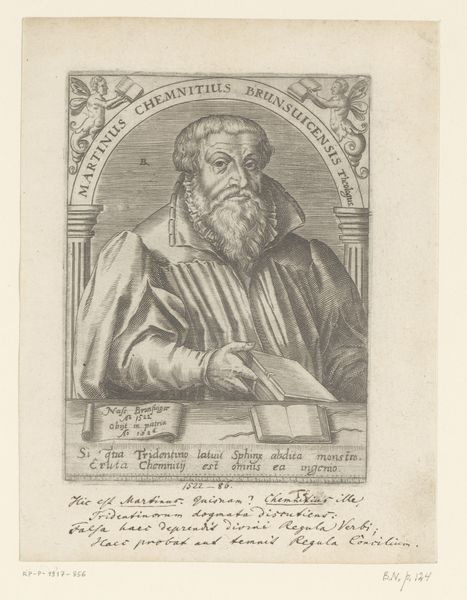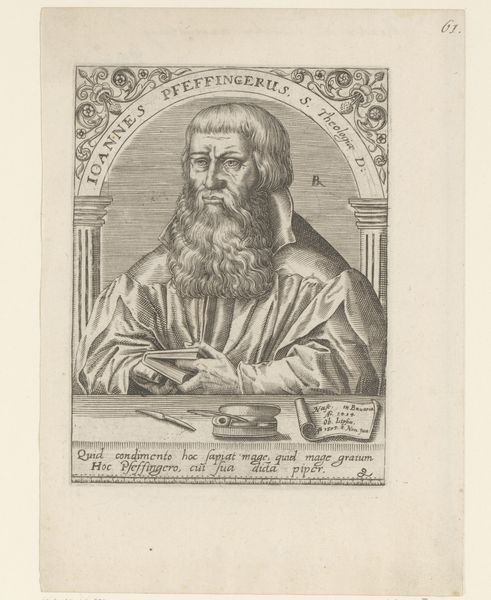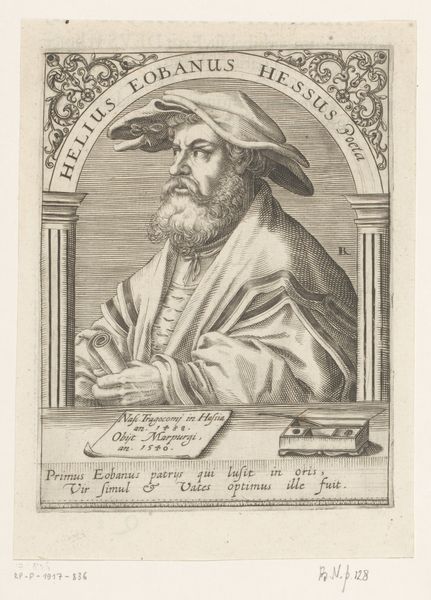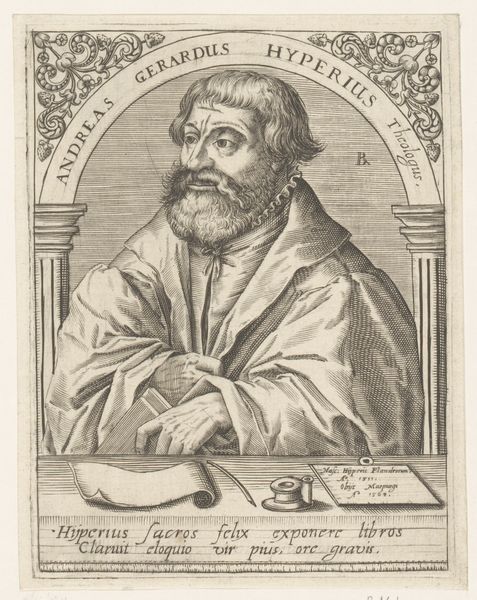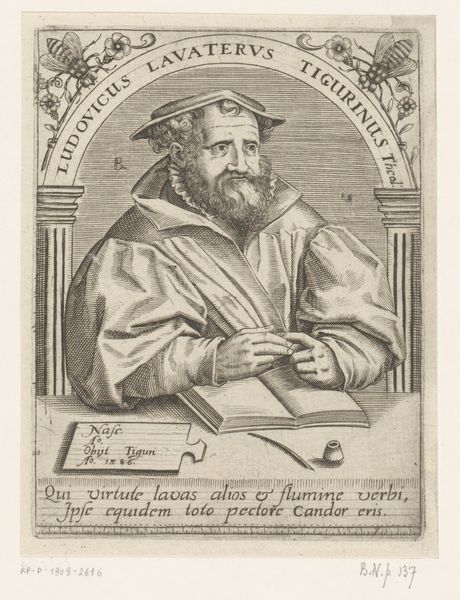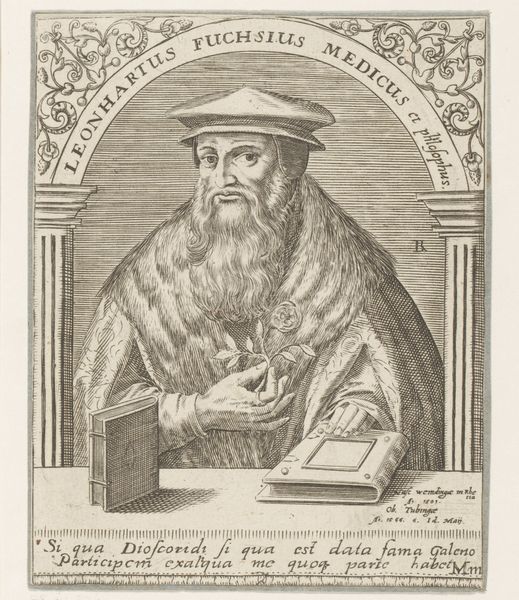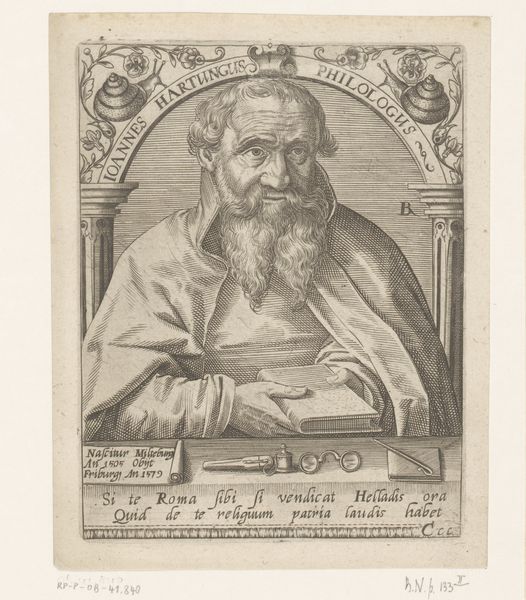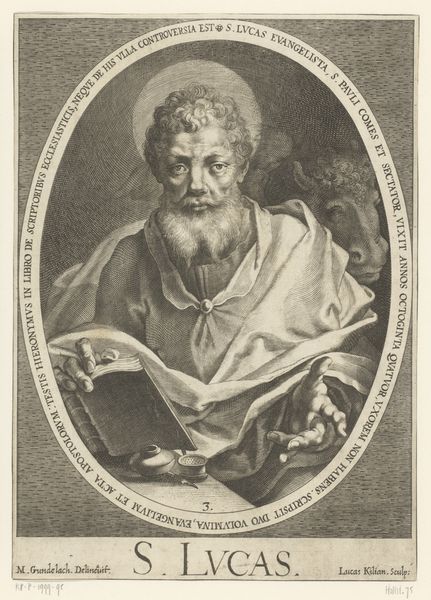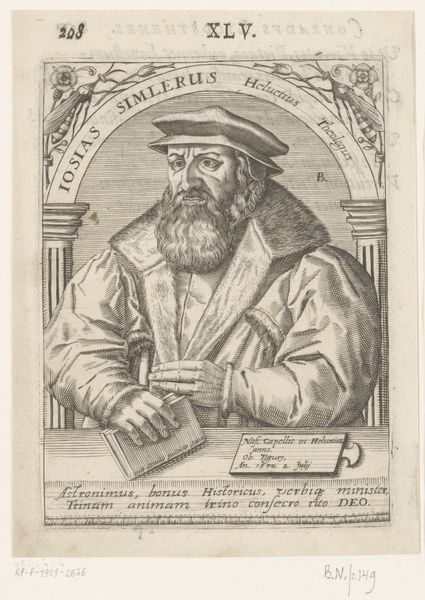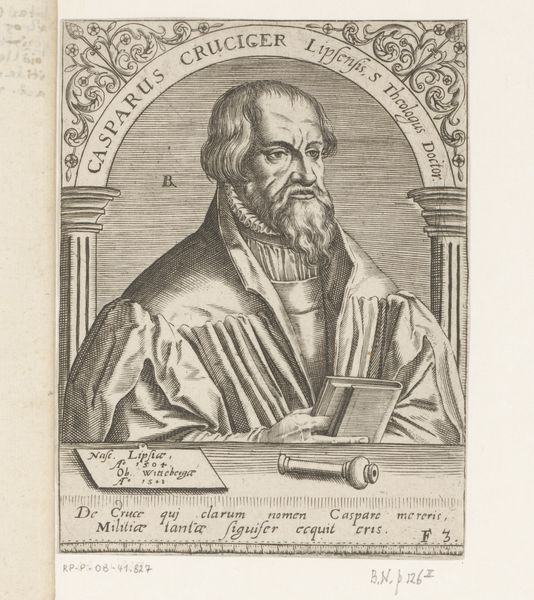
print, engraving
#
portrait
#
aged paper
#
toned paper
#
light pencil work
# print
#
book
#
old engraving style
#
caricature
#
personal sketchbook
#
portrait drawing
#
history-painting
#
engraving
Dimensions: height 143 mm, width 107 mm
Copyright: Rijks Museum: Open Domain
Editor: This is a portrait of Johannes Mathesius, an engraving done sometime between 1597 and 1599 by Robert Boissard. It’s currently at the Rijksmuseum. The image seems formal, a bit rigid even, but what really stands out to me are all the symbolic elements packed into a relatively small space. What do you see in this piece, especially in terms of how the visual symbols shape the meaning? Curator: The density of symbolism is key here. Consider the frame itself – not just a decorative border, but populated with hybrid creatures, suggesting wisdom and vigilance guarding the subject's image and reputation. And the book, obviously a symbol of learning and Mathesius’ theological pursuits, but look closer. It is paired with the quill – tools of interpretation and dissemination. It's about the power of the *written* word. Editor: I noticed the creatures, too. Almost like gargoyles. And the phrase inscribed – "Mathesius Theolog" – what weight does that hold? Curator: Precisely! The term 'Theolog' in large font highlights his professional and spiritual authority in the late 16th century. This was a period of religious reform; a carefully constructed portrait like this served to cement his position in intellectual history, aligning him with tradition while simultaneously showcasing his individual influence through these symbols. Even the lettering style evokes a sense of historical gravitas, nodding back to classical inscriptions. The text on the bottom uses the man's name as indication, which reinforces how seriously they took this particular moment in history. Editor: So, it's not just about accurately depicting his likeness, but also creating a visual argument about his significance? Curator: Exactly. It’s a carefully curated message aimed at solidifying his legacy, not only within his own community but for posterity. How visual symbols embed values through representation, fascinating, isn’t it? Editor: It really is. I never thought about portraits carrying such deliberate arguments before.
Comments
No comments
Be the first to comment and join the conversation on the ultimate creative platform.

